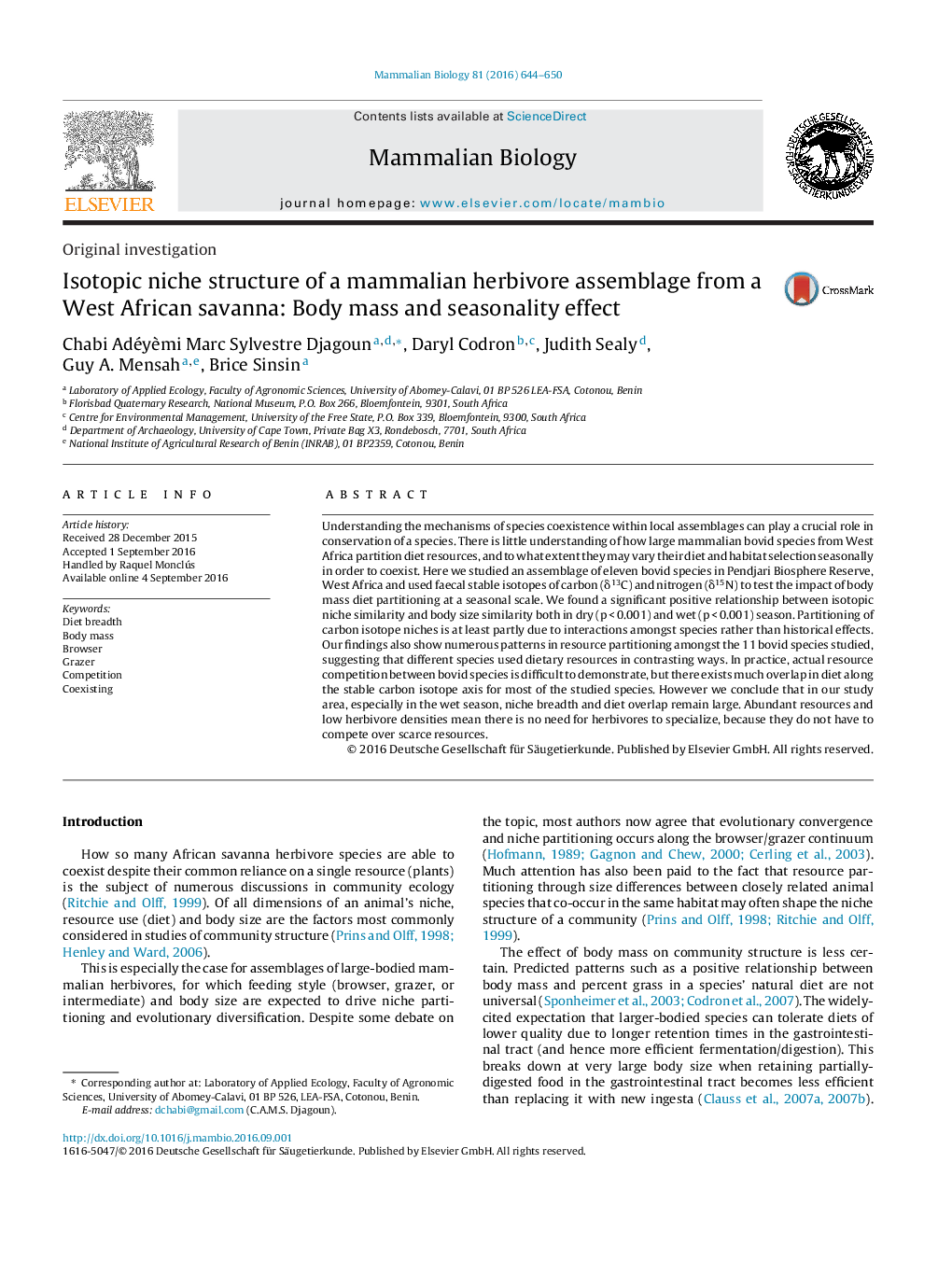| Article ID | Journal | Published Year | Pages | File Type |
|---|---|---|---|---|
| 6481844 | Mammalian Biology - Zeitschrift für Säugetierkunde | 2016 | 7 Pages |
Understanding the mechanisms of species coexistence within local assemblages can play a crucial role in conservation of a species. There is little understanding of how large mammalian bovid species from West Africa partition diet resources, and to what extent they may vary their diet and habitat selection seasonally in order to coexist. Here we studied an assemblage of eleven bovid species in Pendjari Biosphere Reserve, West Africa and used faecal stable isotopes of carbon (δ13C) and nitrogen (δ15N) to test the impact of body mass diet partitioning at a seasonal scale. We found a significant positive relationship between isotopic niche similarity and body size similarity both in dry (p < 0.001) and wet (p < 0.001) season. Partitioning of carbon isotope niches is at least partly due to interactions amongst species rather than historical effects. Our findings also show numerous patterns in resource partitioning amongst the 11 bovid species studied, suggesting that different species used dietary resources in contrasting ways. In practice, actual resource competition between bovid species is difficult to demonstrate, but there exists much overlap in diet along the stable carbon isotope axis for most of the studied species. However we conclude that in our study area, especially in the wet season, niche breadth and diet overlap remain large. Abundant resources and low herbivore densities mean there is no need for herbivores to specialize, because they do not have to compete over scarce resources.
